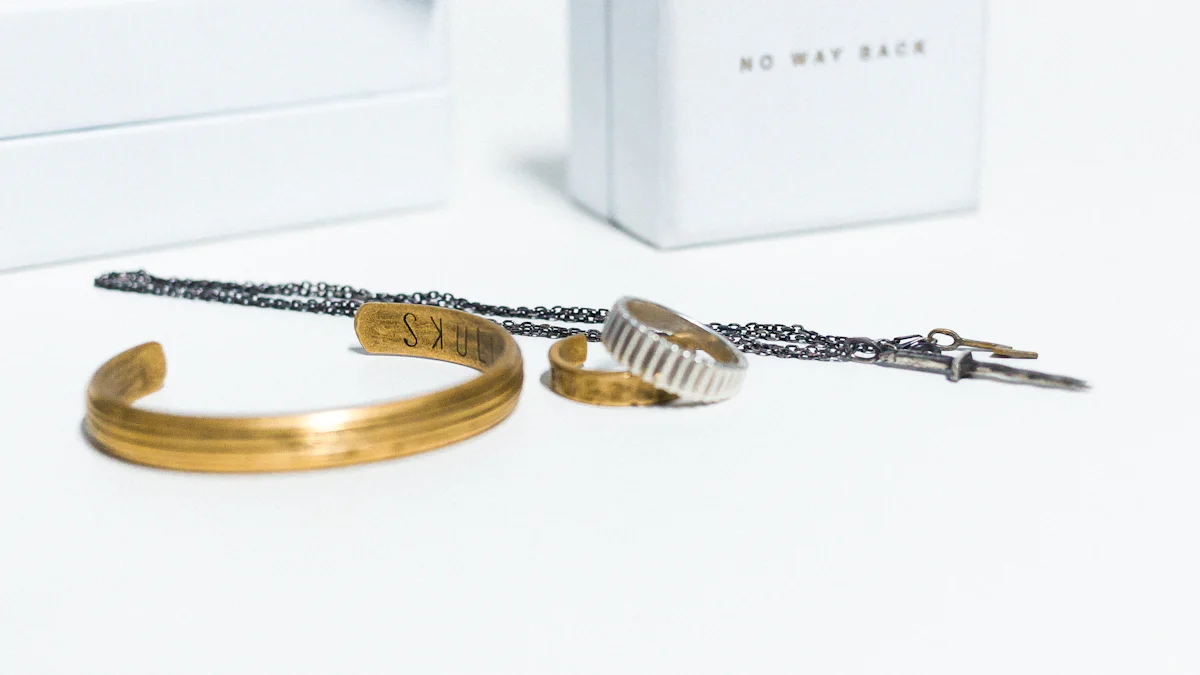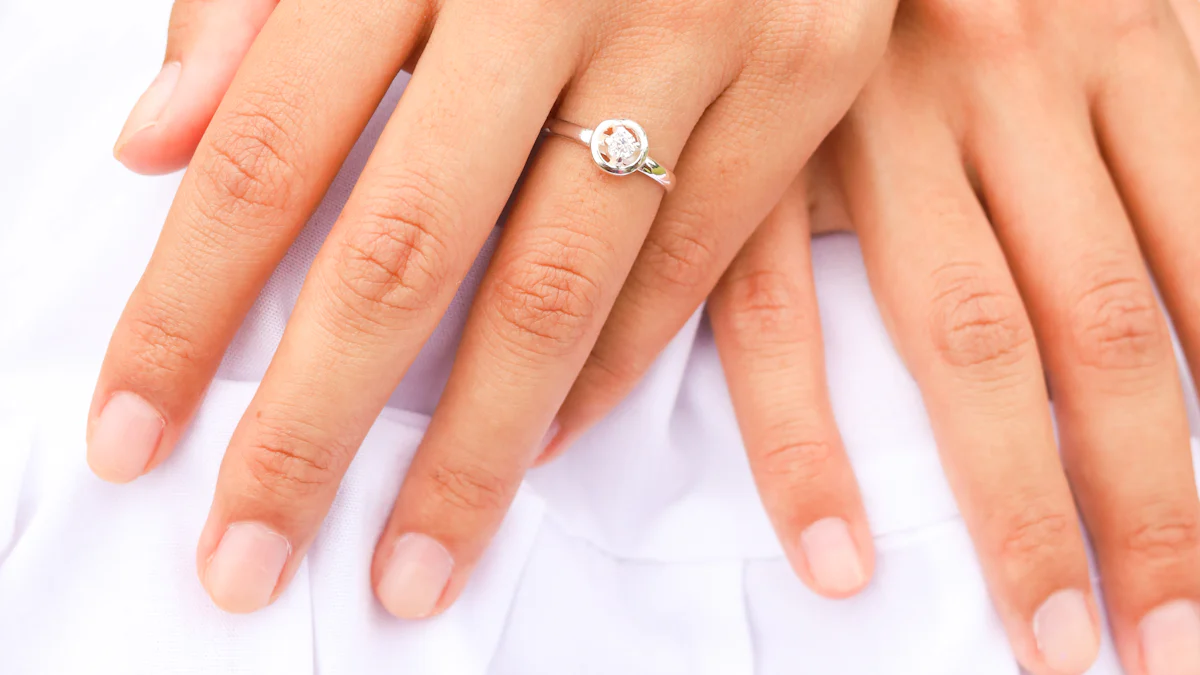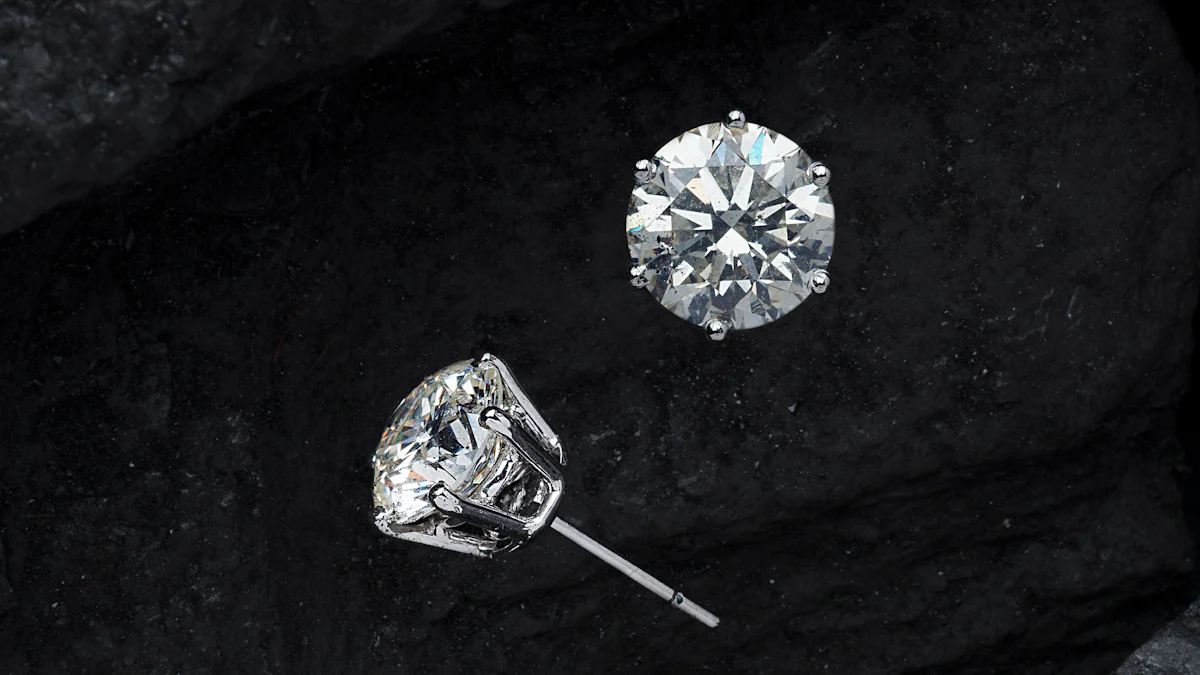Tips for Choosing Jewelry Based on CT TW Specifications

When buying diamond jewelry, understanding what does CT TW mean in diamonds is essential. CT TW, or Carat Total Weight, represents the combined weight of all diamonds in a piece. This metric helps you assess the overall brilliance and value of the jewelry.
Knowing CT TW empowers you to compare pieces effectively. It ensures you perceive the true value and quality of your purchase. Larger CT TW values often mean higher costs, so understanding this specification boosts your confidence when selecting jewelry.
Balancing CT TW with quality, design, and budget is crucial. A well-cut, clear diamond with a smaller CT TW can outshine a larger, lower-quality stone. Focus on finding jewelry that aligns with your style and meets your expectations.
What Does CT TW Mean in Diamonds?

Definition of CT TW
CT TW stands for "Carat Total Weight." It measures the combined weight of all diamonds or gemstones in a piece of jewelry. This system provides a clear understanding of the overall size and value of the stones. For example, if a bracelet contains multiple diamonds, the CT TW reflects their total weight rather than the weight of each stone individually. This measurement simplifies the process of evaluating jewelry with multiple stones, making it easier for you to compare pieces.
The CT TW system became standard in the early 20th century. Before its introduction, jewelers described each stone's size separately, which made it harder to understand the total weight and value of a piece. Today, CT TW is a universal metric that helps you assess jewelry more efficiently.
Difference Between CT TW and Individual Carat Weight
Understanding the difference between CT TW and individual carat weight is essential when shopping for diamond jewelry. Here’s how they differ:
- Carat weight refers to the weight of a single diamond or gemstone.
- CT TW represents the total weight of all diamonds or gemstones in a piece.
- CT TW applies to jewelry with multiple stones, such as rings, necklaces, or earrings.
For instance, a ring with three diamonds might have a CT TW of 0.50 carats. Each diamond could weigh 0.17 carats individually. This distinction helps you evaluate the overall value of the jewelry while considering the size of each stone.
Why CT TW is a Key Factor in Jewelry Selection
CT TW plays a critical role in determining the value and appearance of diamond jewelry. A higher CT TW often indicates larger or more numerous stones, which can enhance the visual impact of the piece. However, the quality of the diamonds—such as their cut, clarity, and color—also affects their overall value.
When selecting jewelry, you should consider CT TW alongside other factors. A piece with a high CT TW may look impressive, but its quality and design should align with your preferences and budget. By understanding what does CT TW mean in diamonds, you can make more informed decisions and choose jewelry that meets your expectations.
How CT TW Impacts Jewelry Selection
CT TW and Jewelry Size
Visual Impact of CT TW on Jewelry
The CT TW of a piece directly influences its size and visual appeal. Jewelry with a higher CT TW often appears more striking due to the larger or more numerous stones. However, other factors like cut, color, clarity, and design also play a significant role in how the jewelry looks.
- A lower CT TW can still create a stunning appearance if the stones are of high quality.
- Two pieces with the same CT TW may look different because of variations in stone size, shape, or arrangement.
- A well-designed setting can enhance the visual impact of smaller stones, making them appear larger.
When evaluating jewelry, focus on how the CT TW interacts with these elements to achieve the desired look.
Misconceptions About Larger CT TW Values
Many people assume that a higher CT TW always means better jewelry. This is not always true. Larger stones may have flaws in clarity or color that reduce their overall quality. Additionally, a piece with several small stones can have a higher CT TW than one with a single large diamond, but the visual impact may differ.
Understanding what does ct tw mean in diamonds helps you avoid these misconceptions. It ensures you evaluate jewelry based on both size and quality.
CT TW and Gemstone Quality
Importance of Cut, Clarity, and Color in CT TW
The quality of gemstones significantly affects the value of CT TW jewelry. Factors like cut, clarity, and color determine how much light the stones reflect, which impacts their brilliance.
- A well-cut diamond with excellent clarity and color can outshine a larger stone with inferior characteristics.
- Higher-quality gemstones often command higher prices, even at lower carat weights.
- CT TW indicates the total weight of stones but does not guarantee their quality.
When selecting jewelry, prioritize quality over size to ensure long-term satisfaction.
Relationship Between CT TW and Number of Stones
The CT TW of a piece reflects the combined weight of all its stones. Jewelry with multiple smaller stones may have a higher CT TW than a piece with one large stone.
- A ring with several small diamonds can achieve a high CT TW while maintaining a delicate appearance.
- The arrangement of stones affects the overall look and feel of the jewelry.
- Pieces with fewer, larger stones often have a more dramatic presence.
Consider how the number and size of stones align with your personal style and preferences.
CT TW and Value
Balancing CT TW with Budget
CT TW directly impacts the price of jewelry. Larger stones or higher total weights typically cost more. However, you can find beautiful pieces within your budget by focusing on quality.
- A smaller CT TW with high-quality stones can offer better value than a larger CT TW with lower-quality stones.
- Compare pieces with similar CT TW values to find the best combination of size, quality, and price.
Understanding what does ct tw mean in diamonds allows you to make smarter purchasing decisions.
Price-Quality Tradeoff in CT TW Jewelry
Higher CT TW values often come with trade-offs in quality. Larger stones may have visible flaws, while smaller, high-quality stones can provide better brilliance.
- Clarity and color are critical factors in determining a gemstone's value.
- A well-cut stone with good clarity and color can surpass a larger stone with inferior characteristics.
- Focus on finding a balance between size and quality to maximize the value of your purchase.
By considering these factors, you can select jewelry that meets your expectations without exceeding your budget.
Practical Tips for Choosing Jewelry Based on CT TW

Matching CT TW to Personal Style
Aligning CT TW with Aesthetic Preferences
Choosing jewelry that reflects your personal style ensures long-term satisfaction. Start by understanding your preferences. Do you prefer bold, statement pieces or subtle, elegant designs? Determine your desired diamond size and overall aesthetic before shopping.
- Trust your eye. Compare different carat sizes and CT TW values to see what appeals to you visually.
- Consider the overall value and appearance of the jewelry. Ensure it aligns with your expectations.
- Choose a piece that complements your wardrobe and daily style.
By focusing on what resonates with you, you can select jewelry that feels uniquely yours.
Considering the Occasion or Purpose
The occasion often dictates the ideal CT TW for your jewelry. For everyday wear, smaller CT TW values with durable settings work best. For special events, larger CT TW pieces can make a statement. Engagement rings, for example, require careful consideration of the 4 Cs—cut, color, clarity, and carat weight.
Think about how and when you’ll wear the jewelry. This helps you choose a piece that fits the purpose while maintaining its beauty over time.
Evaluating Jewelry Design and Setting
Impact of Setting on CT TW Appearance
The setting plays a significant role in how CT TW appears. Certain settings enhance the brilliance and size of diamonds, even with smaller CT TW values. Popular settings include:
- Solitaire
- Halo
- Hidden Halo
- Vintage
- Side Stone
- Three Stone
- Bridal Sets
- Classic
A halo setting, for instance, surrounds the center stone with smaller diamonds, amplifying its visual impact. Explore different settings to find one that enhances the overall look of your jewelry.
Ensuring Durability and Comfort
Durability and comfort are essential when selecting jewelry. A secure setting protects the stones and ensures they stay in place. For rings, consider how the band feels on your finger. For necklaces or earrings, check the weight and fit.
Choose designs that balance beauty with practicality. This ensures your jewelry remains comfortable and lasts for years.
Shopping Smartly for CT TW Jewelry
Comparing CT TW Across Retailers
Retailers often display CT TW differently. Compare similar pieces to understand how CT TW affects price and quality. Look for transparency in descriptions and ask for details about the stones' cut, clarity, and color.
Asking Questions About CT TW Specifications
Don’t hesitate to ask questions. Inquire about the quality of the diamonds, the setting, and how CT TW is calculated. Understanding these details helps you make informed decisions.
Verifying CT TW with Certification
Always verify CT TW with certification from reputable organizations. Trusted certifiers include:
| Organization | Year Established | Notable Contributions | |--------------|------------------|------------------------| | GIA | 1931 | Developed the "4Cs" and the International Diamond Grading System. | | IGI | 1975 | Identifies synthetic diamonds and grades finished jewelry globally. | | EGL | 1977 | Provides diamond and jewelry assessments in North America. |
Certification ensures the accuracy of CT TW claims and guarantees the quality of your purchase.
Common Mistakes to Avoid
Overemphasizing CT TW Over Quality
Focusing solely on CT TW can lead to disappointing purchases. Many buyers mistakenly believe that a higher CT TW guarantees better jewelry. This is not true. The quality of the stones—cut, clarity, and color—plays a significant role in their beauty and value.
A piece with multiple small diamonds may have a high CT TW but lack the sparkle of a single, well-cut diamond of the same weight. Similarly, larger stones with poor clarity or color may appear dull. Always evaluate the quality of the gemstones alongside CT TW to ensure your jewelry meets your expectations.
Tip: Prioritize quality over quantity. A smaller, high-quality diamond often outshines a larger, lower-quality one.
Neglecting the Role of Design and Setting
Ignoring the design and setting of jewelry can diminish its overall appeal. The setting enhances the visual impact of the stones and protects them from damage. A poorly designed setting can make even high-quality stones look less impressive.
- The cut, color, and clarity of the stones influence their brilliance.
- A lower CT TW piece can still look stunning if the stones are well-cut and arranged in an elegant design.
- CT TW does not reflect the size or dimensions of individual stones, which affects how the jewelry appears.
Consider how the design complements the stones. A halo setting, for example, can make smaller diamonds appear larger and more radiant.
Note: Choose a setting that balances beauty with durability. This ensures your jewelry remains attractive and long-lasting.
Failing to Verify CT TW Claims
Trusting CT TW claims without verification can lead to overpaying for subpar jewelry. Some retailers may exaggerate CT TW values or fail to disclose details about the stones' quality.
- CT TW does not guarantee the value or visual impact of a piece.
- Pieces with the same CT TW can vary greatly in appearance due to differences in cut, clarity, and color.
- Certification from reputable organizations like GIA or IGI ensures the accuracy of CT TW claims.
Always ask for certification when purchasing jewelry. This document confirms the quality and weight of the stones, giving you confidence in your investment.
Reminder: Never skip the step of verifying CT TW. It protects you from misleading claims and ensures you get what you pay for.
Understanding CT TW helps you make smarter jewelry choices. It allows you to evaluate the relationship between size, quality, and price effectively.
- Recognize how CT TW impacts pricing and focus on balancing it with cut, color, and clarity.
- Prioritize personal satisfaction by finding the right mix of size, quality, and budget.
To make informed purchases:
- Research and compare options carefully.
- Consider the long-term value of your jewelry.
- Seek advice from trusted jewelers.
By applying these tips, you can confidently select jewelry that reflects your style and meets your expectations.
FAQ
What does CT TW mean in simple terms?
CT TW stands for Carat Total Weight. It represents the combined weight of all diamonds or gemstones in a piece of jewelry. For example, if a ring has three diamonds, CT TW adds up their weights to give you the total.
Does a higher CT TW always mean better quality?
No, higher CT TW doesn’t guarantee better quality. The cut, clarity, and color of the stones matter more for brilliance and beauty. A smaller, high-quality diamond can outshine a larger, lower-quality one.
How can I verify CT TW claims when shopping?
Ask for certification from trusted organizations like GIA or IGI. These documents confirm the accuracy of CT TW and the quality of the stones. Always review the details before making a purchase.
Can CT TW affect the price of jewelry?
Yes, CT TW impacts price. Larger total weights usually cost more. However, quality factors like cut and clarity also influence the value. Compare pieces carefully to find the best balance between size, quality, and budget.
Is CT TW important for everyday jewelry?
CT TW matters for everyday jewelry, but durability and comfort are equally important. Smaller CT TW values with high-quality stones and secure settings work best for daily wear. They offer beauty without compromising practicality.
See Also
A Comprehensive Look at Engagement Ring Diamond Cuts
Your Ultimate Guide to Selecting a White Diamond Ring
How to Choose the Ideal Synthetic Diamond Bracelet

